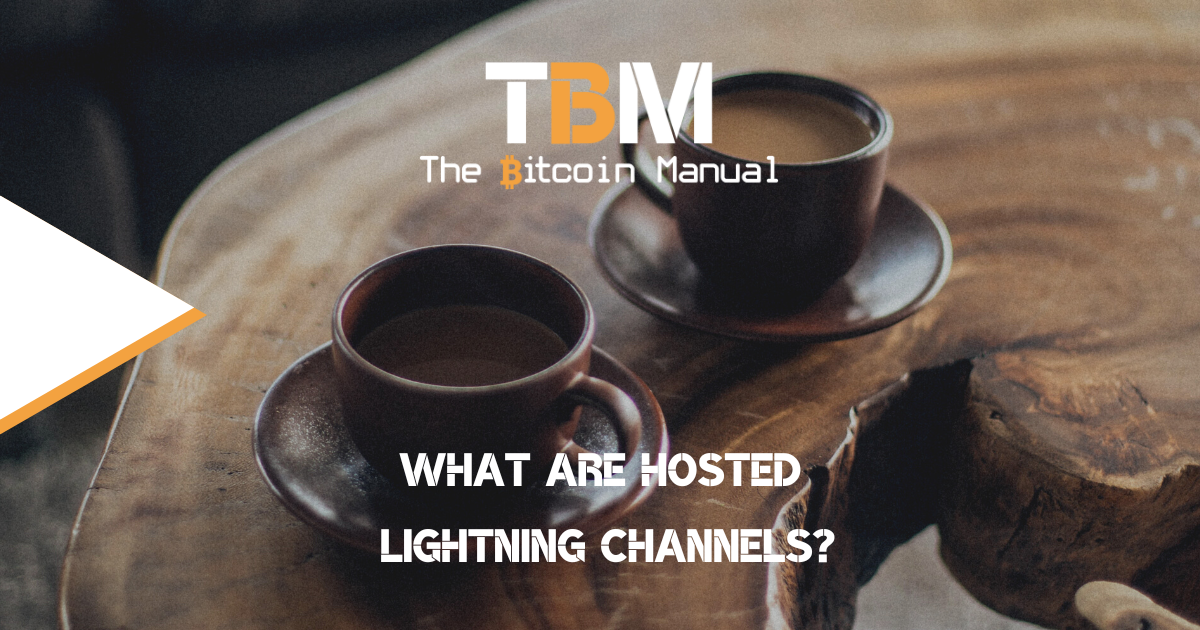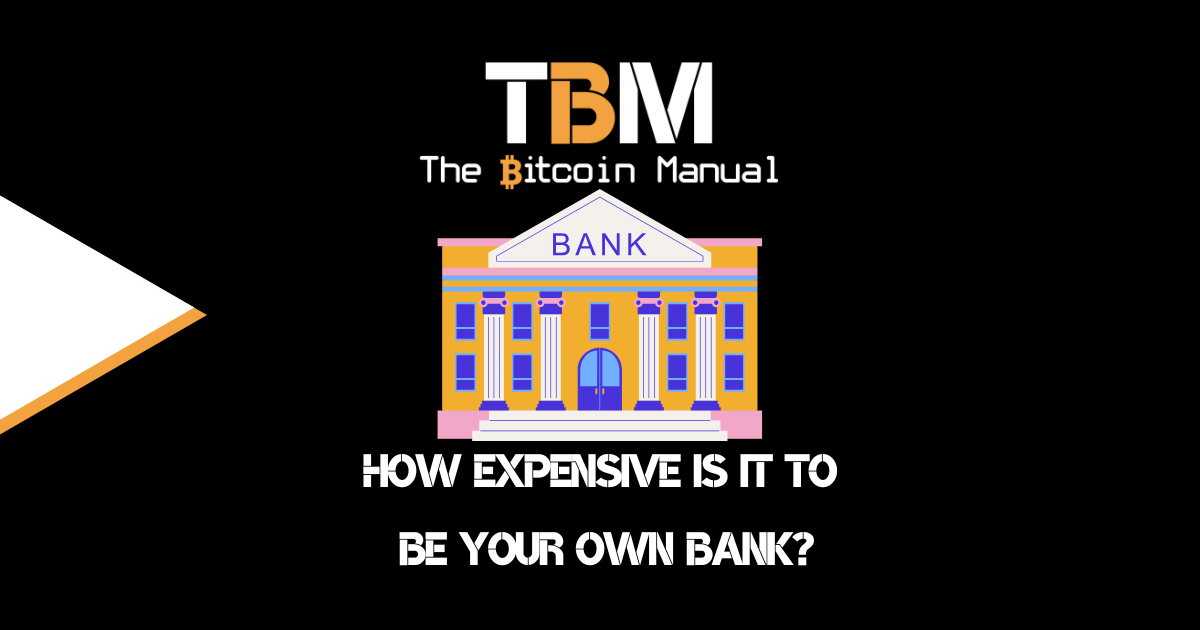Getting your bitcoin into the Lightning Network has clear advantages for those who want to leverage cheaper payments with an instant settlement or wish to offer an alternative route to receive payments.
Despite the clear incentives, many bitcoin holders still do not use second-layer solutions since getting onto the Lightning Network is a complex process. Of the users who do make the leap many users opt to use third services like exchange apps or custodial wallets. These services eliminate the friction in access to the Lightning Network, but they bring trust back into the equation, with users at the mercy of these services’ uptime, policies and reliability.
To encourage users to start to venture deeper into Lightning and take more control over their funds and reduce the amount of trust needed to interact with the network, there needs to be a healthy middle ground that acts as a bridge between fully custodial or fully sovereign.
One proposed solution comes in the form of hosted channels, which provide users with an easy way to make transactions without needing to open a traditional payment channel. In this article, you’ll find out all the details of hosted channels, from the basics of setting up and using them to the advantages and drawbacks of this channel implementation.
We’ll also look at ways to access hosted channels, so you can try them out for yourself and decide which option is the best for you. Hosted channels are an integral part of the bitcoin Lightning Network and can help you make faster and more efficient payments, but it’s important to understand how these channels work before taking a leap.
The risks of custodial lightning wallets.
The simplest way to interact with the Lightning Network is to use a custodial wallet; this could be through an app like the Wallet of Satoshi or an exchange account you might have with a provider like Bitfinex or Cash App. When you use a custodial Lightning wallet, you are able to interact with Lightning rails and other payment channels on the network, but you’re not holding the funds yourself.
You are merely sending a request to a third-party provider that routes the payments on your behalf and showcase the balance on your screen. You have no way of knowing if that balance exists or if it’s backed by bitcoin until you move it into a non-custodial wallet or swap it for an on-chain UTXO via a submarine swap.
A custodial wallet is no different from a banking app you have on your phone right now, except instead of bank crediting ledgers, the provider behind the wallet updates Lightning balances on your behalf. There is, therefore, a lot of trust between you and the wallet provider and many ways in which this trust can be abused.
While you would be aware of the risks of custodial wallets, that shouldn’t stop you from using them if you’re not yet ready to run Lightning all by yourself. It makes very little sense for a user to spin up a computer that is always on, fund it with bitcoin, find a reliable peer and set up inbound liquidity to receive 69 sats from a random anon on Twitter.
Do you need to be fully self-sovereign for a few sats? Some would say yes.
Others doing a risk calculation; might say it’s worth the risk versus the cost to run it all on your own cheaper than the cost of establishing a channel. Custodial wallets are ideal for receiving small amounts that you later redeem on-chain or into a wallet you own and for those taking their first steps into Lightning.
What are regular channels?
In a regular Lightning channel, you would need to put up the bitcoin UTXO you wish to use; let’s say this is 0.01 Bitcoin or 1 Million satoshis. You would take those satoshis and place them into an HTLC (Hashed Time Lock Contract), which will stop you from spending bitcoin on-chain but release the funds to be spent on a Lightning channel.
Once the funds are in a Lightning channel, it needs to be connected to a peer who you wish to pay or wish to establish a connection to route payments to and from for the lifetime of the channel.
This is the ideal way to use the Lightning Network as you always remain in control over your bitcoin; you can close up a channel at any time, receive your funds on-chain and move on without the need to deal with anyone else.
But this method does require:
- Capital upfront
- Technical expertise
- An always on node
Requirements that will be unrealistic for some, especially those who only wish to receive funds with low friction. If I wanted to donate to a charity in the Congo, I have to expect them to have a node up and running with a channel with enough capacity to accept my payment.
That’s a lot of effort for funds that are likely to be redeemed immediately and spent, so taking a little custodial risk for a short time frame makes sense in this situation.
The Lightning limitation
Now you understand the dilemma, do I trust someone who is capable of managing my Lightning funds for me, or do I brave channel management myself and hope I don’t stuff it up?
Don’t get me wrong, channel management GUI’s have come a long way, and it will get easier with time for the average user to manage their own channels, but this is not scalable.
Everyone won’t run a node; you might not like this reality, but accept it.
So where do we go from here?
How do we get more people onto Lightning without burdening them with too much too soon?
What are hosted channels?
Hosted channels are an extension to the Lightning Network protocol, which allows two Lightning Network nodes to establish a new type of channel between them which is intentionally not backed on the chain.
- One side of such a channel is called a “Host” because it’s a side where the actual money is stored.
- The other side is called a Client, and it’s the one who trusts the Host (the amount of trust can be measured as HC capacity).
Established Hosted channels can be announced to the Lightning network where the funds in the hosted channel are a pure Host’s IOU to Client which is not automatically enforceable on-chain but is still auditable.
Host’s balance obligations are cryptographically provable at all times, so the only type of scam a Host can viably perform is an exit scam. So instead of trying a centralised third party that will consolidate their internal database with the balances in their wallet, you have more assurance that real bitcoin is backing these balances and transactions without needing to redeem it to prove the funds are real.
Why do we need hosted channels?
Smoother onboarding for users.
Instead of expecting a novice Lightning user to put up the UTXOs to fund the channel, they can simply rely on someone else to do that for them to receive funds off-chain. This makes it far easier for people without the knowledge or infrastructure to get funds into Lightning.
Users will still have the same custodial experience and, to an extent, similar trust assumptions, but they do have more say in proving they owned funds with signed proofs.
Easier access to liquidity.
The Lightning Network is always at the mercy of the liquidity available; while the network has grown in capacity, a number of channels and more effective routing and rebalancing, it doesn’t mean failed routes have been stamped out.
If there is not ample liquidity, it will result in failed payment which happens because there turns out to be no route with enough liquidity in a given direction to get a payment through.
The solution is adding more channels, but currently, this invariably requires coins to be put into each new channel and then kept there for a long time. At some point, a Lightning node operator may not have enough funds to afford another chain-backed channel and fulfil a routing demand.
The other is channel liquidity marketplaces advertising a rate of return to attract more liquidity that is otherwise sitting on-chain.
Using hosted channels, you now have a third way of sourcing liquidity as these hosted channel owners can receive bitcoin on-chain and broadcast it to the Lightning network and assign the balances to the client wallet.
Improved privacy when routing payments.
Hosted channels are always private and can never be closed in the traditional channel sense; its data may only be removed from the Client’s wallet if there is no desire to use it anymore. Once removed, it can always be fully restored later, provided that the Client still has a wallet seed.
Hosted channels also provide additional privacy when it comes time to pay, as the route is calculated locally by the client, and the host only acts as a hop along the way.
Being a good host, custodial with a caveat.
Hosted channels, while still custodial, allow for more decentralisation of the Lightning network. Instead of every new user trusting a single company hosting a wallet or a single Lightning Service provider (LSP), you now open up competition for hosting people’s funds.
Instead of trusting your entire Lightning balance to one user or company, you can split it across multiple hosts; wallets could display hosts, so you know who is holding each balance, and this could be the basis of a hosting reputation system.
As bad actors rug their clients, they won’t be able to attract new clients to trust their channel, and those that do a good job attract more liquidity and, therefore, more fees as they route larger and more frequent payments.
Hosted channels allow for plebs to compete with LSPs, and users get to decide who wins the battle over custody of their sats.
You might even want to trust someone you know or a local community node runner to be your channel host; in this case, you always know where to find the person who has your sats should they no longer display in your wallet.
How do I secure a hosted channel?
Hosted channels are not widely used yet, with a total of 4 network nodes known to have public hosted channels and also can work as the Host side for private channels.
You can find these node operators below:
To interact with hosted channels, you will need a Lightning Wallet that supports the feature, and so far, only one wallet has added hosted channels as an option.
- Simple Bitcoin Wallet (Discontinued)
- Open Bitcoin Wallet and GitHub – OBW
- Valet Wallet
Note: Simple Bitcoin Wallet (SBW) has been discontinued, and support for it is no longer available; there are two forks available in Open Bitcoin Wallet and Valet Wallet with apps on the Google Play Store should you wish to try out hosted channels.
Do your own research.
If you want to learn more about hosted channels, use this article as a jumping-off point and don’t trust what we say as the final say. Take the time to research, check out their official resources below or review other articles and videos tackling the topic.
Are you a bitcoin and lightning fan?
Have you been using Lightning to make micro-payments? Stream sats or engage with apps? Which app is your favourite? Do you run a Lightning node? Have you tried all the forms of Lightning payments? Which one do you prefer?
Let us know in the comments down below.




